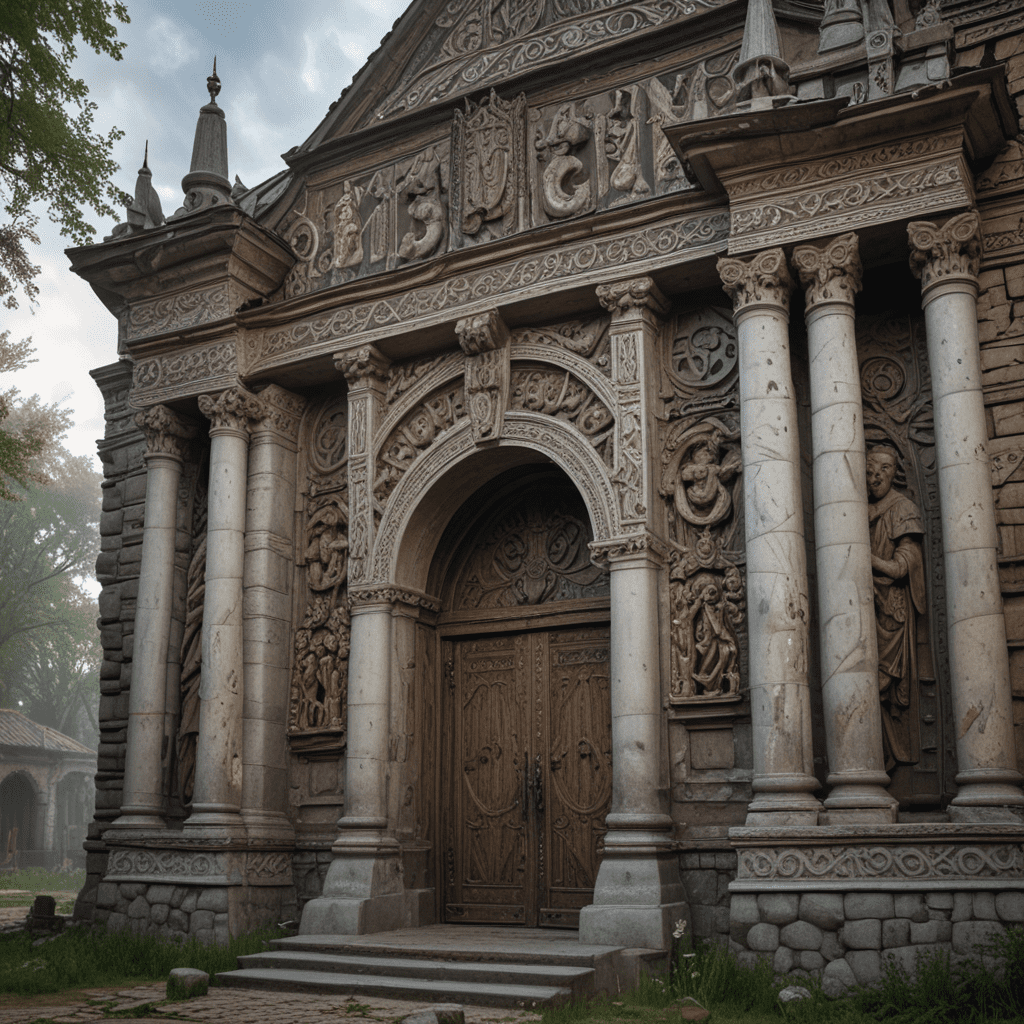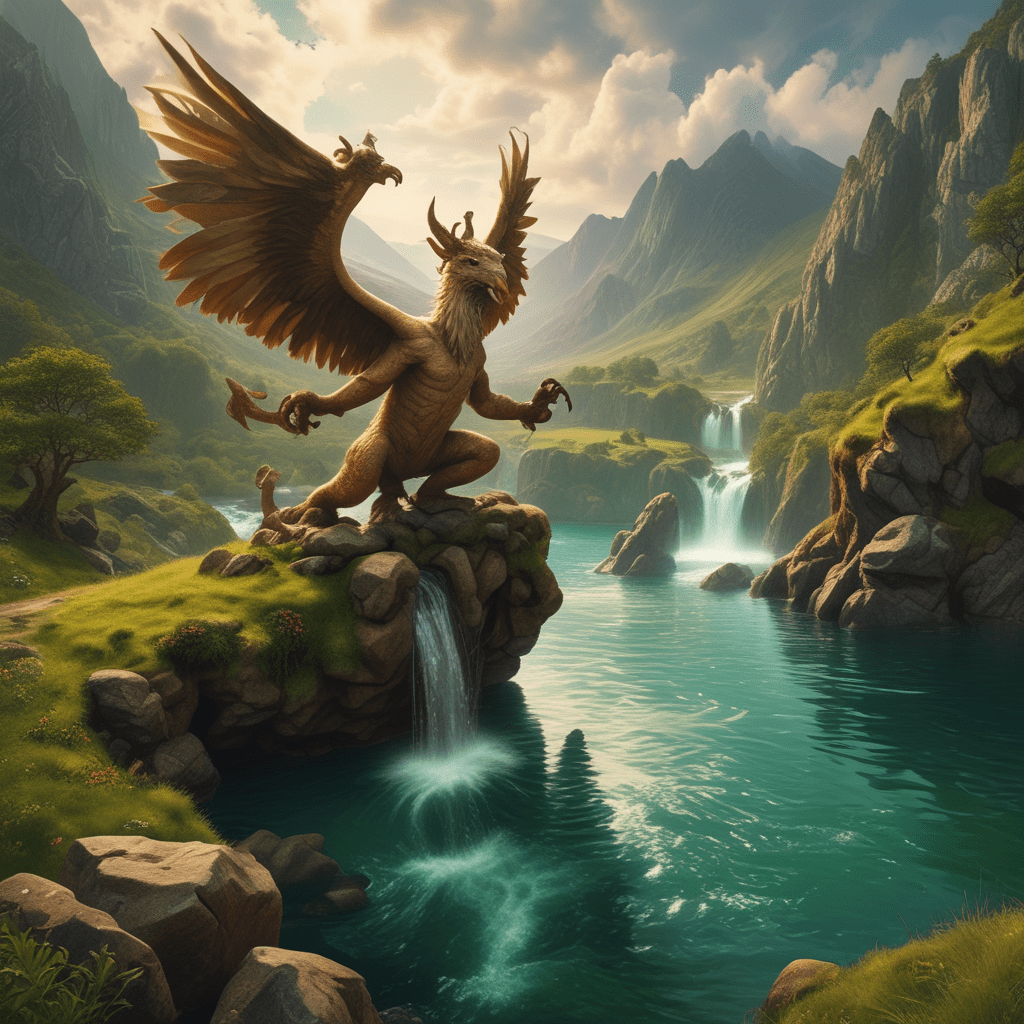1. Slavic Mythology: An Overview
Slavic mythology is a rich and diverse tapestry of beliefs and practices that have shaped the culture of Eastern and Central Europe for centuries. It encompasses a vast pantheon of gods, spirits, and heroes, each with their own unique powers and responsibilities. Slavic mythology is also deeply intertwined with the natural world, and many of its deities are associated with specific elements or forces of nature.
2. The Importance of Dwelling in Slavic Culture
For the Slavs, the home was more than just a physical structure; it was a sacred space that represented the center of their world. The hearth was considered the heart of the home, and it was here that the family gathered to share meals, tell stories, and celebrate important occasions. The home was also believed to be a place where the spirits of the ancestors resided, and it was important to honor them with offerings and rituals.
3. The Influence of the Domovói on House Design
One of the most important spirits in Slavic mythology is the domovoi, a benevolent household spirit that protects the family and the home. The domovoi is typically depicted as a small, furry creature with a long tail, and he is often said to live in the attic or basement of the house. When the domovoi is happy, he will bring good fortune to the family, but if he is angered, he can cause mischief or even illness. As a result, the Slavs took great care to appease the domovoi by leaving him offerings of food and drink.
4. The Role of the Bannik in Bathhouse Architecture
The bannik is another important spirit in Slavic mythology, and he is associated with the bathhouse. The bathhouse was a sacred space where the Slavs went to cleanse themselves both physically and spiritually. The bannik is said to be a mischievous spirit who can play tricks on bathers, but he can also be helpful if he is treated with respect. As a result, the Slavs often left offerings of food and drink for the bannik in the bathhouse.
5. The Symbolism of the Horse in Architectural Decoration
The horse is a powerful symbol in Slavic mythology, and it is often associated with strength, speed, and fertility. As a result, the horse is often depicted in Slavic architectural decoration, both inside and outside the home. Horse heads are often placed on the roofs of houses to protect the family from evil spirits, and horse shoes are often hung over doorways for good luck.
6. The Influence of Slavic Deities on Building Layout
The layout of Slavic homes was often influenced by the beliefs and practices of the Slavic deities. For example, the house was often divided into two main sections: the "clean" half and the "unclean" half. The clean half was used for living and sleeping, while the unclean half was used for cooking, bathing, and other activities that were considered to be polluting. This division of the house reflected the Slavic belief that the world was divided into two realms: the realm of the living and the realm of the dead.
7. The Use of Protective Symbols in Architecture
The Slavs believed that certain symbols could protect them from evil spirits and other harmful forces. As a result, they often incorporated these symbols into their architecture. For example, the cross was a common symbol of protection, and it was often placed on the roofs of houses and on the lintels of doorways. Other protective symbols included the circle, the triangle, and the swastika.
8. The Influence of Slavic Rituals on Building Practices
Slavic building practices were also influenced by Slavic rituals. For example, the Slavs believed that it was important to bury a living creature under the foundation of a new house. This sacrifice was believed to appease the spirits of the land and to ensure the good fortune of the family who lived in the house. Other Slavic building rituals included the placement of a horseshoe over the doorway for good luck and the sprinkling of salt on the threshold to keep out evil spirits.
9. The Continuation of Slavic Mythology in Modern Architecture
Slavic mythology continues to influence architecture in Eastern and Central Europe today. For example, many modern churches in the region are built in the traditional Slavic style, with a central dome and a cross on the roof. Other modern buildings, such as schools and hospitals, often incorporate Slavic symbols into their design.
10. Conclusion: The Enduring Legacy of Slavic Mythology
Slavic mythology has had a profound influence on the architecture of Eastern and Central Europe. From the design of individual homes to the layout of entire villages, Slavic mythology has shaped the built environment of the region. Today, Slavic mythology continues to inspire architects and designers, ensuring that the legacy of this ancient culture will endure for generations to come.
FAQ
What is Slavic mythology?
Slavic mythology is a rich and diverse tapestry of beliefs and practices that have shaped the culture of Eastern and Central Europe for centuries. It encompasses a vast pantheon of gods, spirits, and heroes, each with their own unique powers and responsibilities. Slavic mythology is also deeply intertwined with the natural world, and many of its deities are associated with specific elements or forces of nature.
How has Slavic mythology influenced architecture?
Slavic mythology has influenced architecture in a number of ways. For example, the layout of Slavic homes was often influenced by the beliefs and practices of the Slavic deities. Slavic building practices were also influenced by Slavic rituals. Today, Slavic mythology continues to inspire architects and designers, ensuring that the legacy of this ancient culture will endure for generations to come.
What are some examples of Slavic symbols?
Some examples of Slavic symbols include the cross, the circle, the triangle, and the swastika. These symbols were often used in architecture as a way to protect against evil spirits and other harmful forces.



